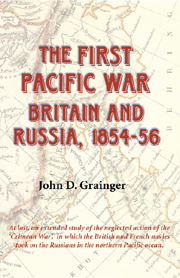Book contents
Summary
From a European or eastern American viewpoint, the Pacific Ocean is on the other side of the world. From the Pacific, the North Atlantic is a long way off. It can be approached by going west, by way of America, through California or Panama or round Cape Horn, or by going east, by way of Russia and Siberia, or by sea by way of the Indian Ocean. Whichever route is followed, the Pacific is a long distance away, and all the more so in the days of horse- and wind-power. And when you get there it is at the end of the journey. It follows that, depending on the origin of the traveller, the history and geography of the Pacific area are normally viewed through European or American or Russian eyes. Perspective is all, as the term ‘Far East’ implies. (This is even used by Americans, to whom it is really to the west; note that for Australians it is now the ‘Near North’.)
So, just as the approaches were various, the history of the Pacific is also fragmented. This study is an attempt to knit together a series of events during 1854–1856 which concerned many of the people in the Pacific lands, but which were largely perpetrated by extra-Pacifickers. Russians, French, British, Americans, Chinese, Japanese, Hawaiians, Aleuts and Kurile islanders were all involved, but each had their own ‘take’ on the events. As a result these events have been generally misunderstood, and most accounts, from whatever viewpoint they are written, contain grievous, distorting, even egregious errors.
- Type
- Chapter
- Information
- The First Pacific WarBritain and Russia, 1854–56, pp. xiii - xviPublisher: Boydell & BrewerPrint publication year: 2008



